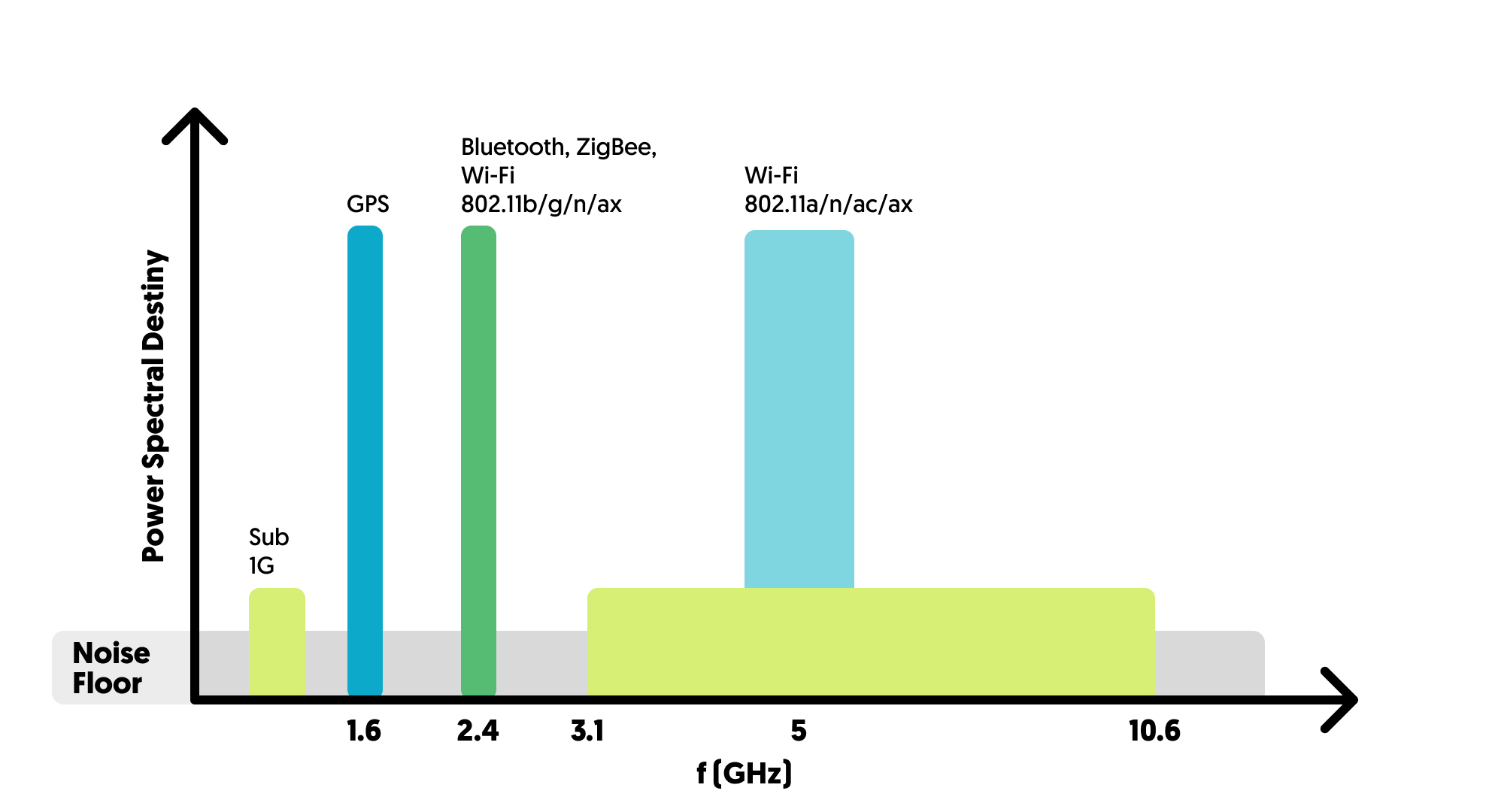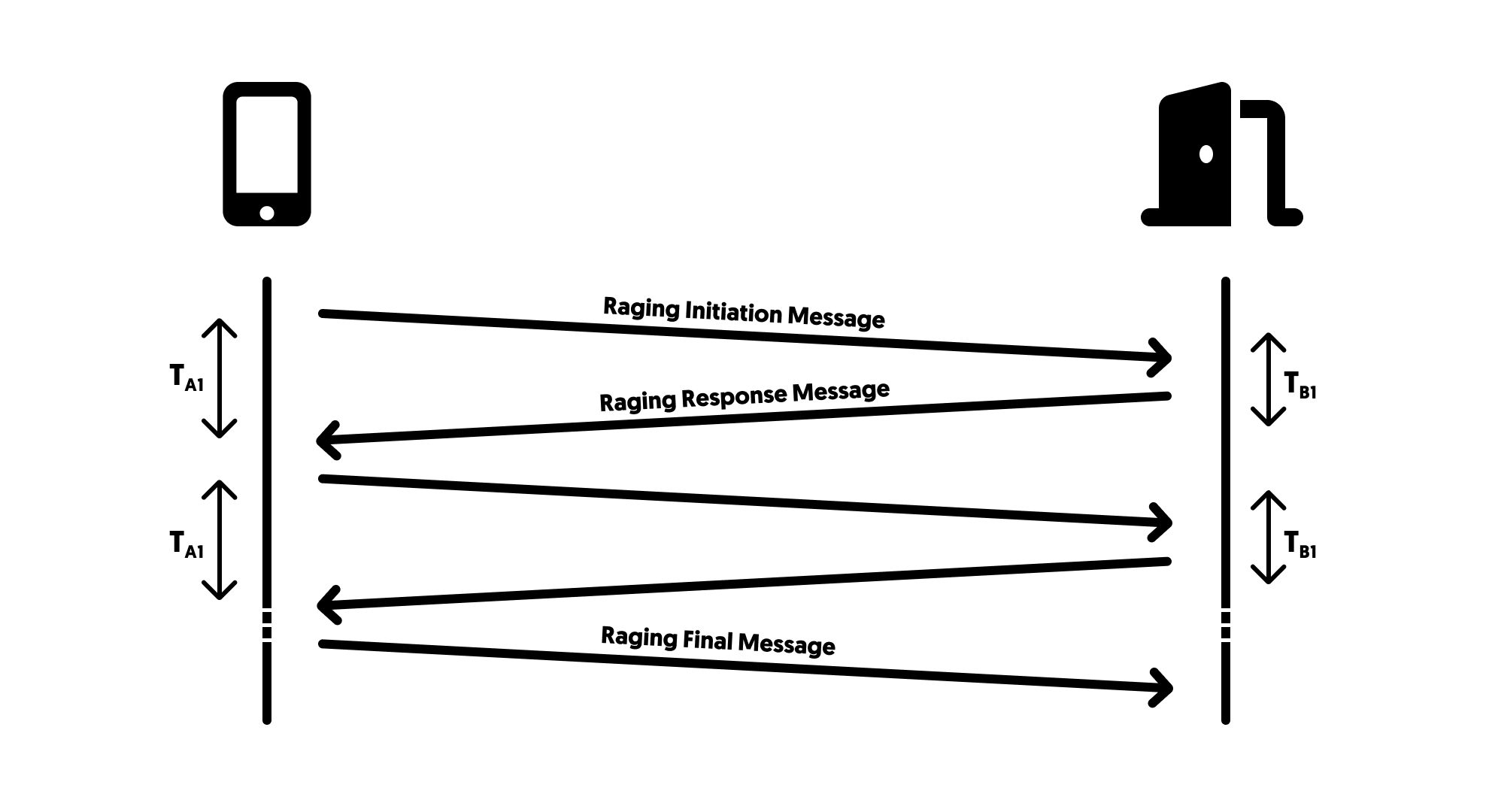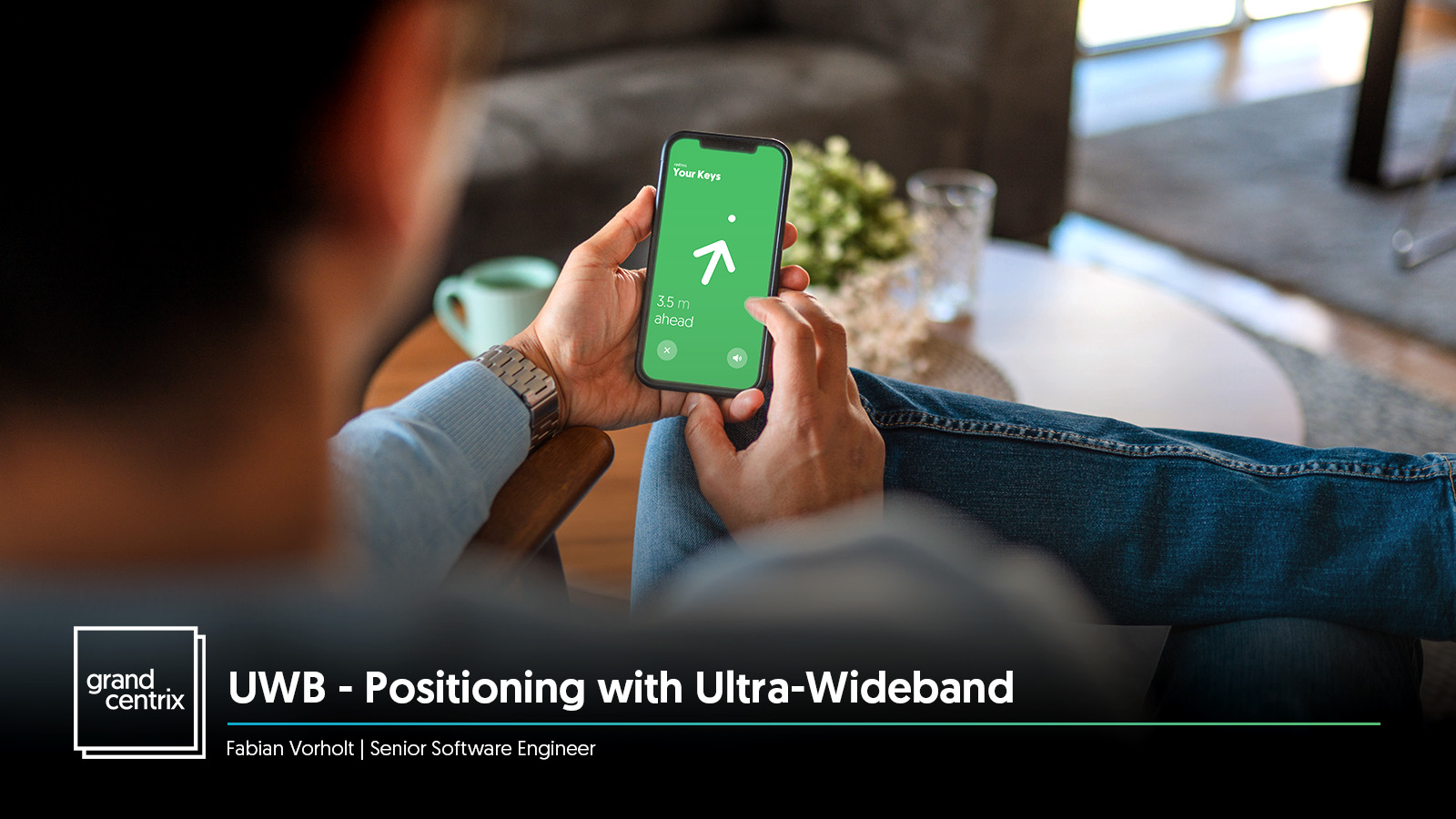Smart Home / Smart Building control
UWB can be used as a trigger when a device comes in range of another device. This kind of trigger technique can be used in smart home appliances. For example, lights could potentially light up when a person is nearby, which can be determined by a ranging session between a personal device and the light bulb. Not only does this allow for automations similar to those possible with a motion detector, it can also be used for different automations based on which person is present.
New possibilities for User Interfaces
Being aware of the exact position other devices have relative to a smartphone, tablet or Laptop can add significant value for the user experience and user interface. A laptop could for example determine were exactly an external monitor is and adjust the UI accordingly. It is also possible to use the proximity of two devices to trigger actions like showing a share sheet to share data between the devices.
How does UWB work?
UWB Ranging is a powerful wireless positioning technique that uses two devices in different roles to determine their relative position. One device acts as an initiator (sends the ranging signal) and the other as a target (receives the ranging signal). The initiator can communicate with multiple targets simultaneously, while a target can only participate in one ranging session at a time.
Because of the pulse-based communication, the distance between two devices can be calculated by measuring the time-of-flight (ToF) between signals. The distance is estimated based on the actual time it takes for the pulse to be transmitted between the two devices. Due to this technique, the distance can be determined with an accuracy of a few centimeters.

Additionally, to the distance, the azimuth angle can also be determined by measuring the Phase Difference of Arrival (PDoA). In this scenario, one device sends a signal to the measuring device (target) equipped with multiple antennas. The target uses these antennas to receive the sent signal. Due to the fact that the receiving device uses two different antennas, the signal shows phase differences which can be used to determine the azimuth angle.
How does UWB differ from other radio technologies?
UWB is a radio technology that utilizes a very wide range of frequencies (3.1 GHz - 10.6 GHz) for short-range, wireless communication. In comparison Bluetooth, ZigBee and Wi-Fi operate on a small range of frequencies. Due to the wide range of used frequencies UWB radio has a high resistance to interference from others.

Additionally, UWB utilizes short radio pulses within a large bandwidth. The channel bandwidth used for UWB is 500 MHz and above, in comparison, Bluetooth runs on a bandwidth of 1-2 MHz and consumer WiFi networks usually run on a bandwidth of 80 MHz. By using a large bandwidth, UWB can transmit the data with lower power. This makes UWB very power efficient, extends the service life of battery powered devices and ensures a longer operating time for the system.
Will UWB replace other radios?
UWB and other radios, like Bluetooth, are not counterparts. In fact, they complement each other. UWB doesn’t include any kind of advertisement feature to be discoverable for other UWB devices. Due to that, some other communication is needed to establish a channel between two UWB ranging devices. This is called out-of-band communication and needs to be done using a different communication channel. There are several different options to choose from: Bluetooth, WiFi, NFC, QR-Codes or custom solutions. Usually, Bluetooth is used to discover the nearby device and initialize the UWB session. After the Bluetooth discovery of a nearby UWB device, the ranging session is initiated by exchanging the configuration parameters like the ranging role.
Is UWB widely available?
Since the iPhone 11 every new iPhone model contains a UWB chip. However, while UWB has gained popularity through Apple and it’s AirTag, it is by no means a technology that is unique to Apple. Flagship phones running Android, like the Pixel Pro series or Samsung Pro series, also contain an UWB chip. We expect more and more Android phones to be equipped with the necessary chips too.
Key facts on why to use UWB Ranging
- Positioning technique with centimeter-level accuracy
- Energy efficient due to low power transmission of short pulses within a large bandwidth
- High resistance to interference from other wireless technologies due to wide frequency spectrum
- Built-in security features of UWB Ranging to sensitive use cases, like secure access control systems
- High availability, as it has been built into every iPhone since the iPhone 11 and is increasingly finding its way into Android phones
 Have you ever used an Apple AirTag™ to locate lost items? Or did you open your new Tesla using your iPhone? The technology behind it is called Ultra-wideband (UWB). UWB allows two devices to determine their distance and orientation with remarkable accuracy. This means your smartphone can precisely guide you to your missing belongings, and a car knows exactly when you want to open it’s door.
Have you ever used an Apple AirTag™ to locate lost items? Or did you open your new Tesla using your iPhone? The technology behind it is called Ultra-wideband (UWB). UWB allows two devices to determine their distance and orientation with remarkable accuracy. This means your smartphone can precisely guide you to your missing belongings, and a car knows exactly when you want to open it’s door.



